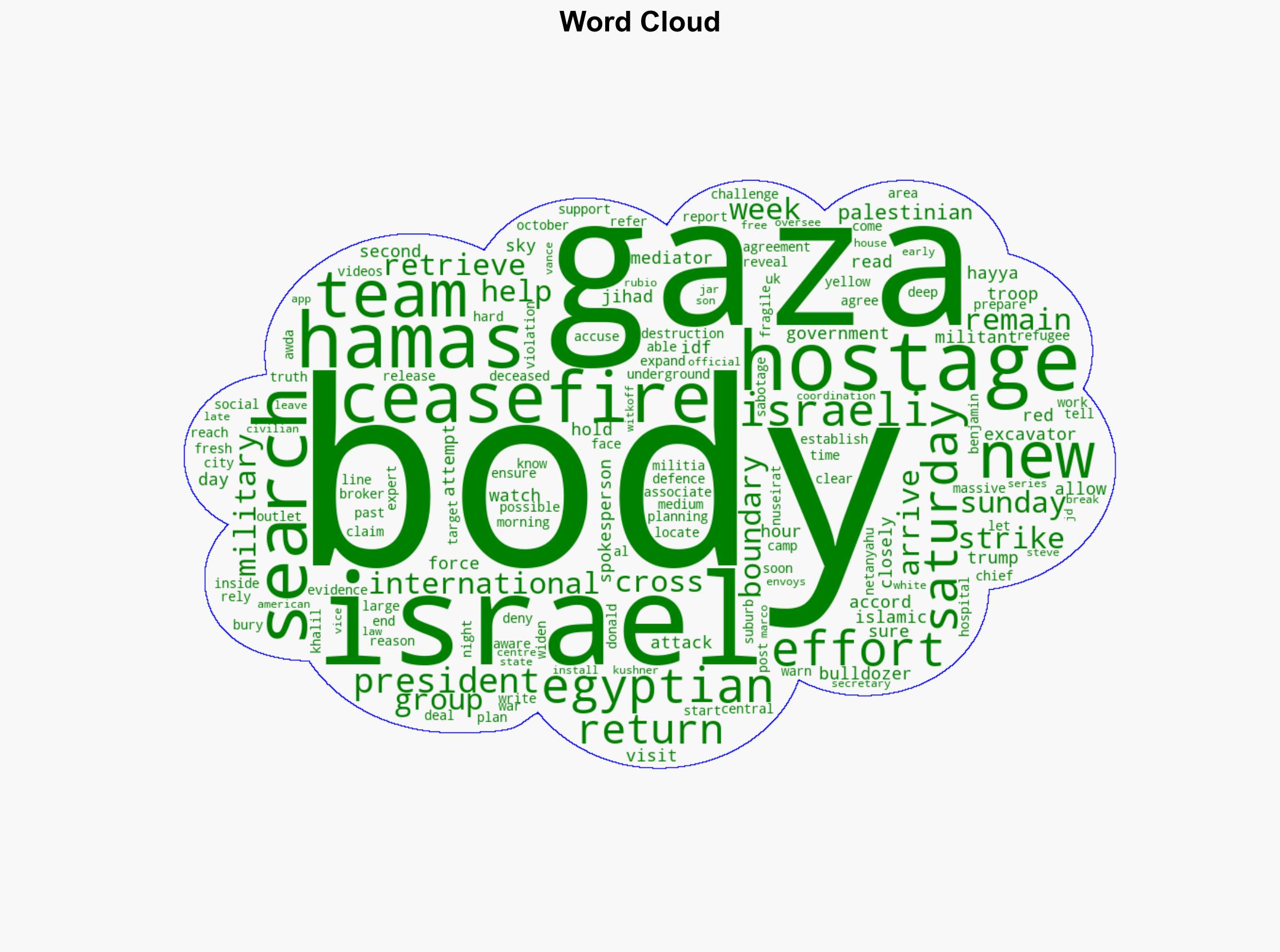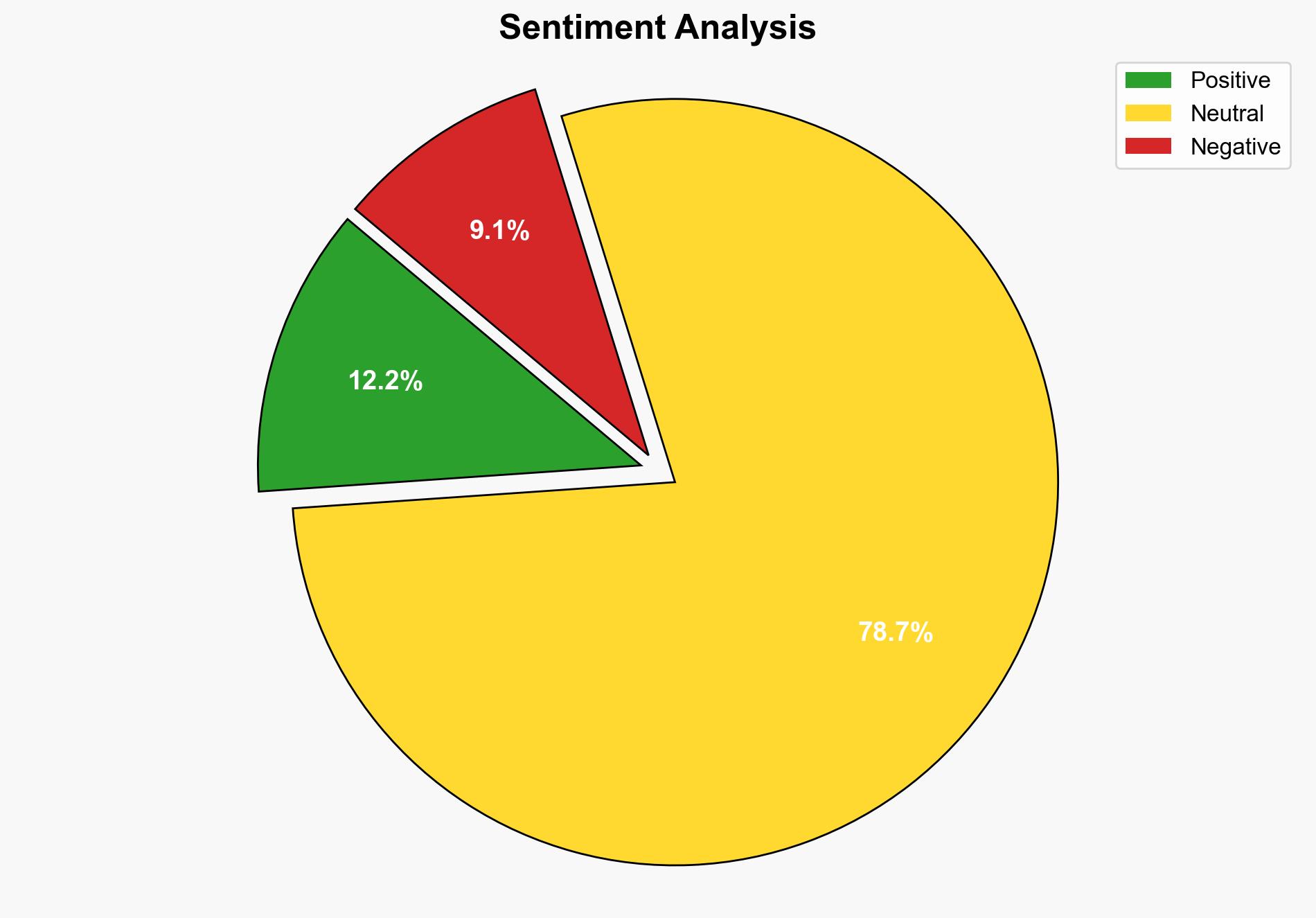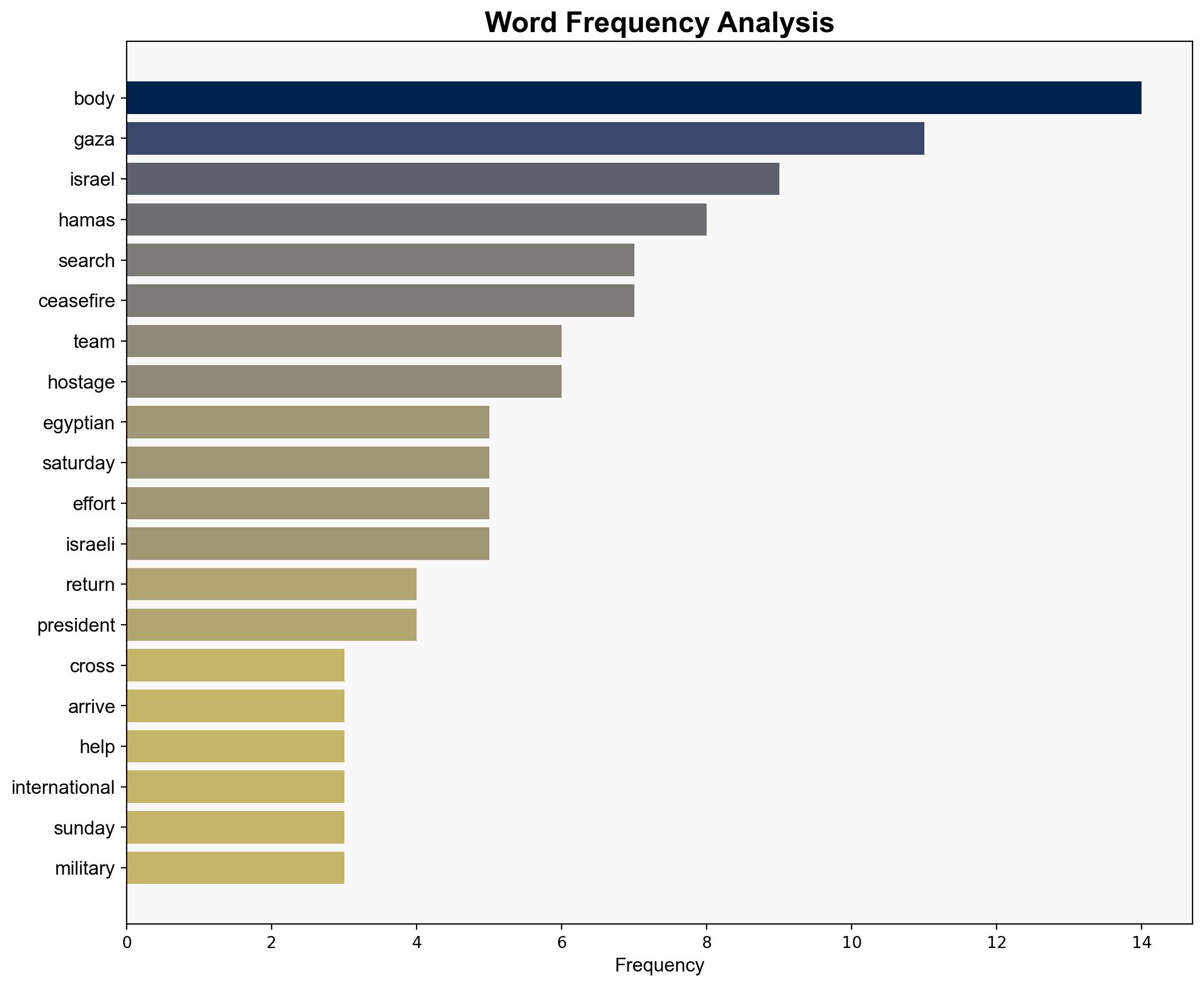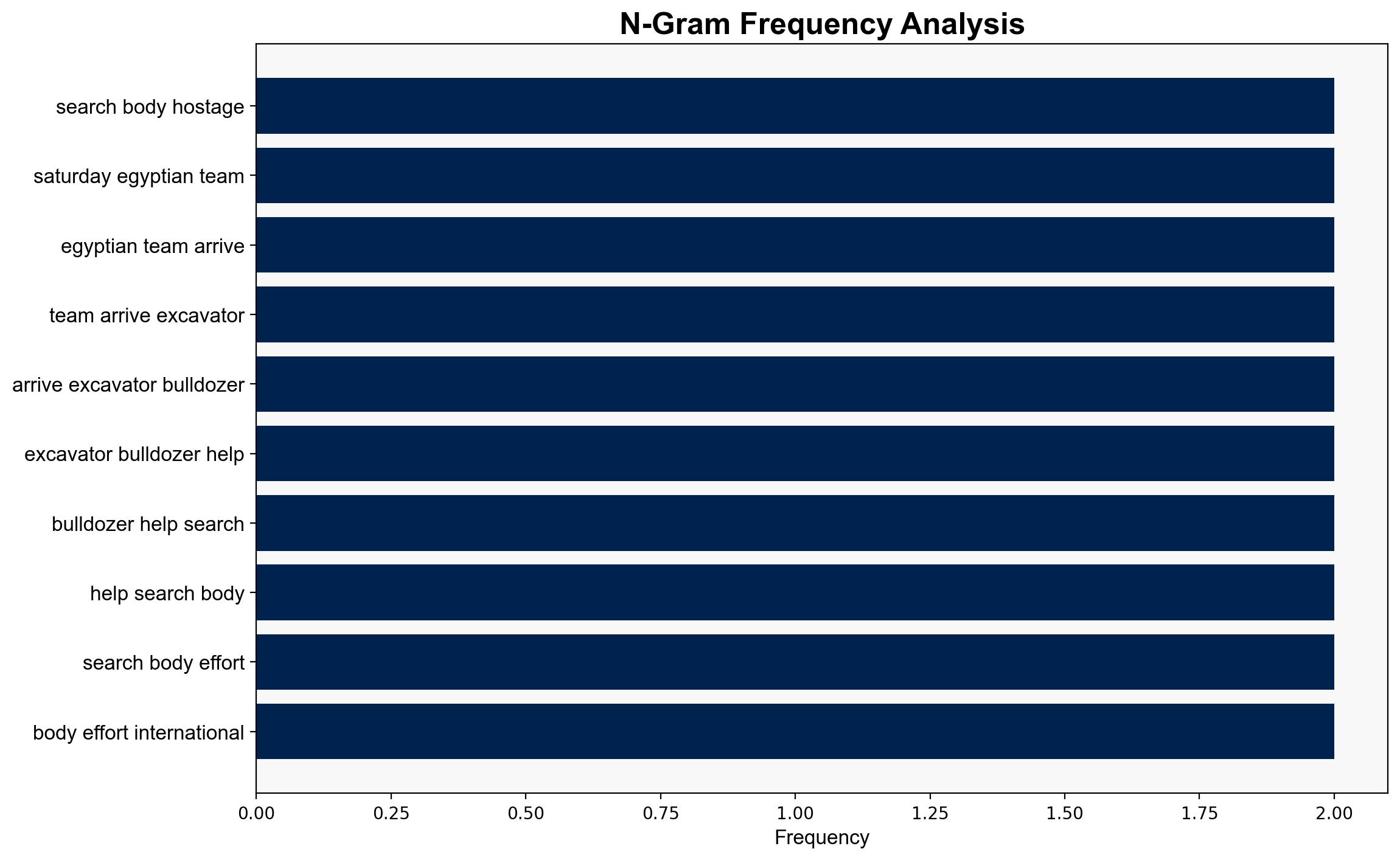Israel allows Red Cross and Egyptian teams into Gaza as search for bodies of hostages widens – Sky.com
Published on: 2025-10-26
Intelligence Report: Israel allows Red Cross and Egyptian teams into Gaza as search for bodies of hostages widens – Sky.com
1. BLUF (Bottom Line Up Front)
The most supported hypothesis is that the current ceasefire and humanitarian efforts are a strategic maneuver by both Israel and Hamas to manage international pressure and maintain a temporary peace. Confidence level: Moderate. Recommended action: Monitor the ceasefire’s stability and prepare for potential escalations if hostilities resume.
2. Competing Hypotheses
1. **Hypothesis A**: The ceasefire and allowance of international teams into Gaza are genuine efforts by Israel and Hamas to de-escalate the situation and address humanitarian needs.
– **Supporting Evidence**: The involvement of international mediators and the Red Cross suggests a coordinated effort to stabilize the region. The presence of Egyptian teams with heavy machinery indicates a serious commitment to recovering bodies.
2. **Hypothesis B**: The ceasefire and humanitarian efforts are tactical moves by both parties to regroup and prepare for further conflict.
– **Supporting Evidence**: Recent Israeli strikes on Gaza and accusations from Hamas of ceasefire violations suggest underlying tensions. The strategic use of ceasefires to gain international favor or regroup militarily is a common tactic in prolonged conflicts.
Using ACH 2.0, Hypothesis B is slightly more supported due to ongoing military actions and accusations of ceasefire violations, indicating potential deception in the ceasefire’s intent.
3. Key Assumptions and Red Flags
– **Assumptions**: Both hypotheses assume that international pressure is a significant factor influencing the actions of Israel and Hamas.
– **Red Flags**: The lack of transparency about the ceasefire terms and the absence of a clear timeline for hostilities to cease entirely raise concerns about the ceasefire’s durability.
– **Blind Spots**: The potential influence of external actors like the U.S. and Egypt on the ceasefire dynamics is not fully explored.
4. Implications and Strategic Risks
– **Escalation Risks**: If the ceasefire collapses, there is a high risk of renewed hostilities, potentially drawing in regional actors and escalating the conflict.
– **Geopolitical Implications**: The situation may strain Israel’s relations with neighboring countries and impact its international standing.
– **Psychological Impact**: Prolonged uncertainty and conflict may exacerbate humanitarian crises and fuel further radicalization.
5. Recommendations and Outlook
- Continue diplomatic engagement with key regional players to reinforce the ceasefire.
- Enhance intelligence gathering to detect early signs of ceasefire violations.
- Scenario Projections:
- Best Case: Ceasefire holds, leading to long-term negotiations and peace efforts.
- Worst Case: Ceasefire collapses, resulting in a full-scale conflict.
- Most Likely: Periodic violations occur, but ceasefire largely holds due to international pressure.
6. Key Individuals and Entities
– Khalil al-Hayya
– Donald Trump
– Benjamin Netanyahu
– Marco Rubio
– JD Vance
– Steve Witkoff
– Jared Kushner
7. Thematic Tags
national security threats, cybersecurity, counter-terrorism, regional focus




